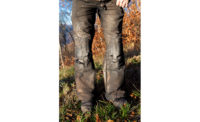Workers who use hand and/or power tools can expose themselves and co-workers to personal injuries and illnesses such as: lacerations, crushes, burns, amputations; fractures and musculoskeletal disorders; skin and pulmonary illnesses; sight and hearing damage; and electrical shocks.
The Bureau of Labor Statistics reported in 2016 the private industry sector recorded 40,600 injuries and illnesses involving days away from work cases (DAWC) involving tools; 29,680 of these injuries happened while using non-powered tools and 10,920 during the use of powered tools. The hand was the part of the body mostly affected.
Here’s what to check for to reduce the risk of these injuries:
Checking hand tools
Screwdrivers
- Handles are tight in the shank, clean, not worn or cracked and do not show signs that the screwdrivers were used as a chisel or as a punch.
- If they are electrically insulated, insulation has not been compromised, exposing the underlying metal shank.
- The shanks are straight and do not show signs the screwdrivers were used as a pry bar or submitted to extra turning power.
- The tips of the blades in slotted screwdrivers show a straight edge.
- The tips of Phillips screwdrivers have the star configuration well defined.
Hammers & mallets
- No tape is wrapped around the handles.
- All handles do not show slivers or any cracks.
- The handles, if not integral, are firmly and correctly attached to the head of the hammers.
- The heads are not damaged and the faces are not mushroomed.
Wrenches
- SAE and/or metric systems wrenches are available as necessary.
- Larger wrenches or commercial handle extenders in case that a superior amount of torque is necessary during the operations are available.
- If hand and power wrenches are used, check that the sockets of one are not used in the other.
- Adjustable wrenches are not being permanently used in place of fixed opening wrenches.
- The jaws of pipe wrenches are not worn to the point of not providing the necessary grip against a pipe.
- Wrenches do not present deformations caused by being abused.
Saws
- The handles are firmly attached to the blades or to the frames.
- Blades are tightly attached and not dull or damaged.
- The orientation of the teeth – hacksaws usually have the teeth pointing forward, thus cutting during the “push stroke”.
Pliers
- Pivot points and/or joints are firm.
- If a plier is electrically insulated, check that the insulation has not been compromised, exposing the underlying conductive material.
- Pliers are not being abused. e.g.: hammering the jaws to cut a wire or bolt.
Files & wood rasps
- Teeth are of equal height and not dull.
- Handles, if non-integral, are firmly attached to the tang.
- Files do not present any abnormality in their shapes and surfaces which could indicate that they were used as a pry bar or hammer.
- Files are dry and there is no foreign material stuck in between the teeth.
- A file card / brush is available for cleaning the grooves.
Clamps
- Only specialized lifting clamps are used to hoist objects.
- Clamps are not used to permanently hold objects in place.
- The frames and/or the spindles are not bent.
- Their moving parts are clean and oiled.
- If present, the swivel is turning free.
Chisels
- Handles are firmly attached to the tang and not cracked if made of wood.
- No mushroomed heads.
- The cutting edges are sharp.
Utility knives
- Utility knives not in use have their blade retracted.
- Handles are not damaged.
- The blades are not dull and their tips are not damaged.
Checking power tools
- When not in use they should be disconnected from the energy source and properly stored.
- They do not show signs of being operated outside their designed specifications.
- The tools, besides being visually inspected, should also be briefly turned on in order to check for abnormal noises, mal function of switches, etc.
If electric driven, check the following:
- Electrical cords are in good condition and have a three-pronged plug or are double insulated.
- The cordless tools have compatible rechargeable batteries and chargers in good condition.
If pneumatic driven, check the following:
- That the compressed air supply is adequate to the ratings of the various tools operated by the end users.
- Hoses do not present damage or splices; their pressure ratings and diameters are adequate.
- When using quick disconnect type fittings, the male end is installed on the tool.
- Radiator hose clamps are not used to secure air hoses to fittings.
If hydraulic driven, check the following:
- Warning signs: maximum pressures, working loads, etc. are conspicuously displayed and easy to read.
- Hoses, couplings, fittings and valves follow manufacturer’s specifications and do not present any sign of damage.
- Operators are aware of the possible existence of “residual energy” even after the equipment has been shut down.
Damaged, modified and homemade tools
Check if there is a simple and clear policy, Job Safety Analysis (JSA), etc. regarding the use of tools, including a protocol for addressing damaged, modified and homemade ones.
Pro-active final recommendations
- The cleaning, inspection and storage of the tools should be accomplished at the end of every shift.
- Protocols for periodic inspection of the hand and power tools should be part of the Standard Operating Procedures.
- Safety hazards associated with tools should be addressed in the Job Safety Analysis.
- Workers should demonstrate knowledge and hands-on skills with regard to the correct use and maintenance of their hand and power tools in use – additional training should be provided whenever necessary.
Taking safety home
- All information presented in this article is likewise applicable to the tools used in DIY projects, hobbies, etc.
- Have a chat with your folks and let them know how the tools should be properly used and maintained.



